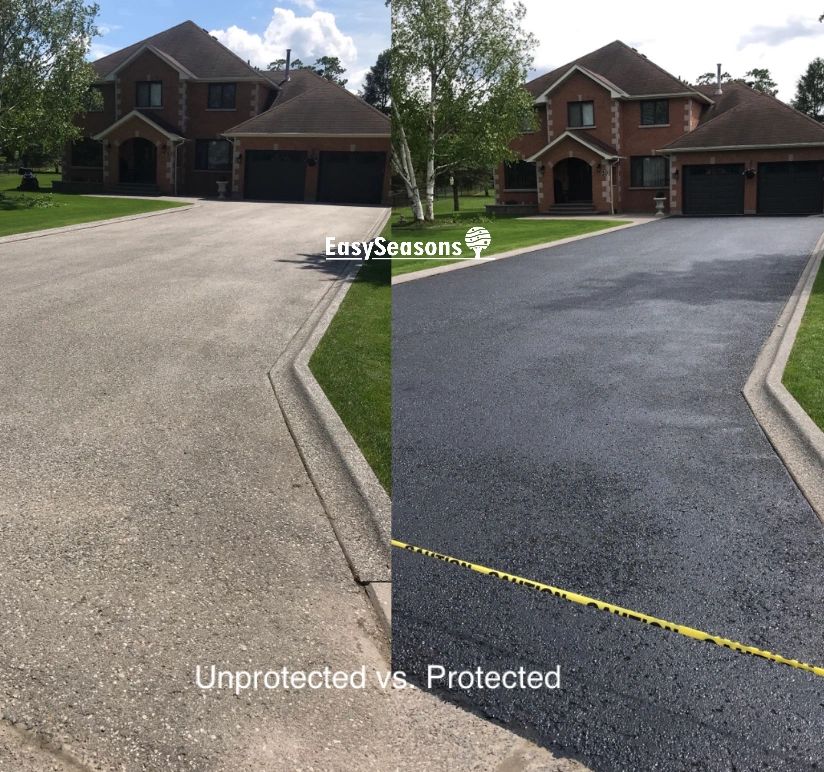Raise Sidewalk Performance: Cold Mix Asphalt Sealing Tactics
Raise Sidewalk Performance: Cold Mix Asphalt Sealing Tactics
Blog Article
Cold Mix Asphalt Vs. Hot Mix Asphalt: Which Is Right for You?

Make-up Distinctions
Cold mix and hot mix asphalts differ considerably in their make-up, with distinct characteristics that influence their efficiency and applications. Cold mix asphalt is generated by emulsifying the asphalt binder with water and an emulsifying agent before mixing it with aggregate. This approach enables for the asphalt to be workable at reduced temperature levels, making it excellent for temporary repair work and for usage in cooler weather problems. Warm mix asphalt, on the various other hand, is manufactured at heats, commonly in between 300-350 ° F, which aids to achieve much better compaction and a more sturdy final item. The hot mix asphalt production procedure entails heating the aggregate and asphalt binder individually before incorporating them at the asphalt plant.
Furthermore, chilly mix asphalt tends to be less dense and extra flexible than hot mix asphalt. This versatility makes it better matched for areas with higher levels of activity, such as driveways or roads with rush hour. On the other hand, warm mix asphalt is recognized for its high durability and resistance to rutting and fracturing, making it a favored option for freeways and high-traffic roads where durability is vital.
Installment Process Variances
The process of installing chilly mix and hot mix asphalt shows notable variances in their demands and treatments. In comparison, hot mix asphalt necessitates a more intricate setup process. Due to the heating requirements, hot mix asphalt installations are typically brought out by professionals with specific tools, ensuring a more structurally sound and permanent outcome.
Resilience and Durability Elements
When considering asphalt alternatives, resilience and longevity are vital variables to review for lasting pavement efficiency. Hot mix asphalt (HMA) is understood for its outstanding durability and durability.
In regards to durability, HMA normally outshines CMA as a result of its superior stamina and resistance residential or commercial properties. HMA sidewalks have a longer solution life, requiring less regular repair services and maintenance, which can translate to cost savings in the long run. In addition, HMA sidewalks are more easily adjustable to fulfill details project needs, better enhancing their sturdiness.
Expense Considerations
Considering the financial ramifications is an essential facet when evaluating the selection between hot mix asphalt (HMA) and cool mix asphalt (CMA) for sidewalk projects. While the initial cost of hot mix asphalt is generally higher than that of cool mix asphalt, HMA commonly gives an extra cost-effective solution in the lengthy run due to its superior resilience and long life.
In addition to material costs, it's crucial to take into consideration the costs connected with setup and upkeep when comparing HMA and CMA. Ultimately, the choice between HMA and CMA ought to take into account not simply the first cost however likewise the long-term monetary effects to figure out the most economical choice for the particular sidewalk job.
Environmental Impact Contrast
Comparison of the environmental influences between hot mix asphalt (HMA) and chilly mix asphalt (CMA) reveals unique distinctions in sustainability techniques. HMA manufacturing needs high temperature levels, leading to increased asphalt repair power usage and greenhouse gas exhausts.
Furthermore, the use of CMA usually entails reusing existing asphalt sidewalk, advertising resource conservation and lowering the amount of waste sent to land fills. By opting for CMA over HMA, roadway construction tasks can contribute positively to ecological conservation initiatives.
Final Thought
In verdict, the choice in between chilly mix asphalt (CMA) and hot mix asphalt (HMA) relies on different variables such as structure, installment procedure, sturdiness, long life, price, and environmental influence. cold mix asphalt. While CMA offers a cost-effective and fast solution for minor repair work, HMA makes sure superior resilience and durability for rush hour areas. Think about these elements thoroughly to determine which sort of asphalt is the appropriate choice for your paving requires

Taking into consideration the economic effects is an essential aspect when evaluating the choice between warm mix asphalt (HMA) and cool mix asphalt (CMA) for sidewalk tasks. While the initial expense of warm mix asphalt is usually greater than that of cool mix asphalt, HMA commonly gives a much more cost-effective solution in the lengthy run due to its exceptional resilience and durability. asphalt repair.Comparison of the ecological impacts between warm mix asphalt (HMA) and cool mix asphalt (CMA) exposes distinctive distinctions in sustainability techniques.In verdict, the option between chilly mix asphalt (CMA) and hot mix asphalt (HMA) depends on numerous variables such as composition, setup procedure, sturdiness, longevity, expense, and ecological impact
Report this page